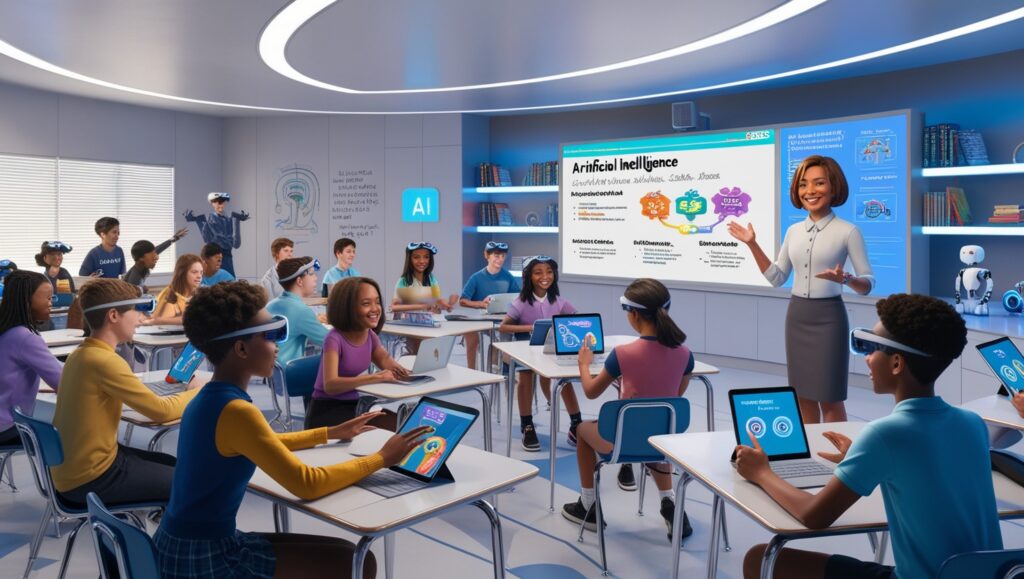Is it considered cheating if students use generative AI in their academic work or coursework?
Students “copy-pasting” content from the internet was the worry ten years ago. They’re now allowing AI to write their assignments, which is concerning because it could lead to AI plagiarism and the growth of services like Turnitin that identify text generated by AI. Perhaps the issue lies not with students adjusting to new tools, but rather with the education system’s stubborn adherence to antiquated ones.
In the past, the purpose of education was to equip students with the “right answers” so they could enter the workforce, which demanded specialized knowledge. But the workplace of the future is not the same. We frequently lack the knowledge to ask the proper questions, let alone the correct answers. We do know, however, that students will work with technology, not against it. In order to help students acquire the skills necessary to navigate an uncertain future using all available tools, including generative AI, today’s educational system needs to change.
Generative AI: A Tool for Enhancing, Not Replacing, Learning
The COVID-19 pandemic’s abrupt transition to remote learning revealed the shortcomings of conventional educational models and emphasized the promise of digital tools. Why shouldn’t students use generative AI to supplement their education if they can learn efficiently online? And apparently, they are. After analyzing 200 million papers, Turnitin’s writing detector discovered that just 3% and 11%, respectively, had more than 80% and 20% of their text created by AI. Furthermore, almost half% of the pupils in their research have routinely utilized generative AI tools.
This is a promising development, indicating that the true question is not whether students use generative AI at all, but rather how they use it. AI tools should be viewed as essential tools that mirror the skills students will need in their professional lives, not as a shortcut.
Instead of replacing traditional classroom instruction, generative AI should be used to enhance it. The “Education 4.0” framework, according to the World Economic Forum, proposes that in order to prepare students for the jobs of the future, education systems should prioritize cultivating the skills that give humans a clear advantage over machines. Parallel to this, the U.S. Department of Education emphasized that in order to prepare students for a workforce that will depend more and more on these technologies, curricula must include AI and digital literacy.
AI can be used by students to investigate difficult subjects and improve their problem-solving skills, just as professionals use it to expedite tasks and produce insights. The key is to make sure that students are actively involved in their education and that generative AI is being used to support rather than replace their work.
Preparing Students for an AI-Driven Future
Success in the workplace requires a combination of creativity, innovation, and risk-taking. Although nobody anticipates that a well-designed generative AI prompt will lead to the next big discovery, it is highly appreciated if using one does. This is how we should teach in the classroom as well. We should concentrate on how AI tools can promote creativity rather than worrying that they will stifle it. While ideas can be produced by generative AI tools, it is the responsibility of students to assess, improve, and contribute their own viewpoints. Tasks ought to demand creativity, critical thinking, and introspection—elements that these technologies are unable to duplicate.
Analogously, AI provides venues for trial and creativity. Employees of today are expected to push boundaries, investigate scenarios, and simulate outcomes using new technologies. As students will be required to solve problems that do not yet exist, teaching these skills in the classroom is imperative. The key to success in the workplace of the future is fostering this spirit of inquiry and curiosity.
In addition, ethical technology use can be ensured by teaching students AI literacy, which present employees are learning on the job. Teachers may help students navigate the moral dilemmas they will encounter in the workplace by advising them on responsible AI use, which includes knowing its advantages, disadvantages, and biases. This will also give students important digital literacy and an understanding of AI’s wider societal implications.
Evolving Education to Meet Tomorrow’s Challenges
Teachers need to change what they teach, assign, measure, and evaluate, just as managers need to change their tactics in the workplace. Creating AI-enhanced learning experiences should be the main priority, not detecting and prohibiting the use of generative AI. If AI can perform a task entirely, it probably isn’t difficult enough to encourage deep learning. Instructors ought to design assignments that necessitate human input—be it ethical reasoning, creative thinking, or critical analysis—so that AI functions as a learning aid rather than a substitute for intellectual effort.
Providing a foundation for students to build their careers and lives is ultimately the role that education will play in the future of work. Traditional solutions are no longer adequate, and it must change to meet the demands of an unpredictable world. When it comes to education, generative AI should be seen as a partner since it can help students acquire the critical thinking, problem-solving, and moral judgment necessary to thrive in a world that is changing quickly in addition to technical proficiency. In order to ensure that students are not just consumers of technology but also creators and innovators in their own right, we can prepare them to flourish in an AI-driven future by carefully incorporating generative AI into academics.








